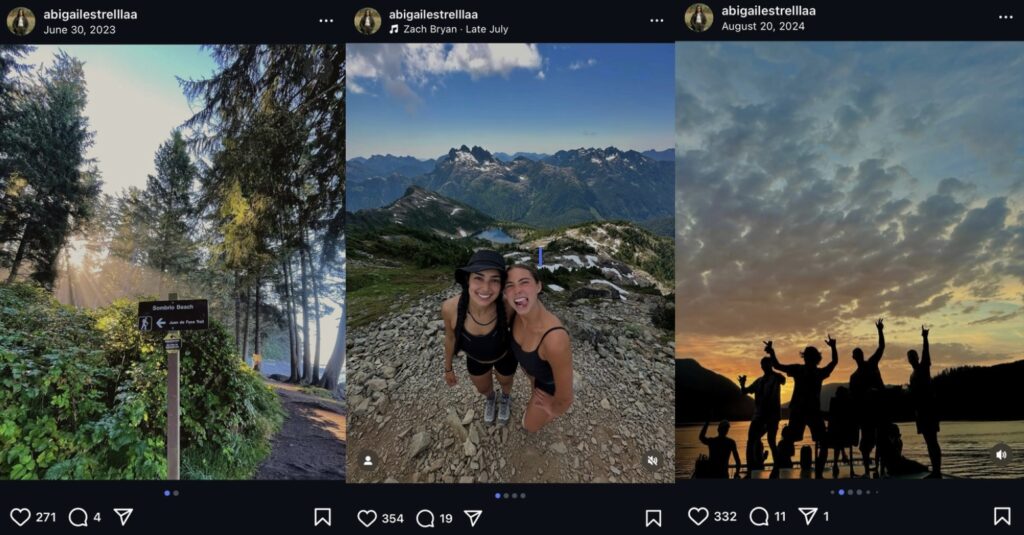To be so incredibly candid, both my personal and professional digital identities feel a little bit unknown to me. Like David White mentioned in the “Visitors and Residents” video, they (young people) “learn how to use technology the same way they learn their language,” and that way of looking at it definitely shook me (White, 2014). Social media has been a constant in my life, and now at the ripe age of 23 I am reflecting on what it has meant to have had access to it from such a young age. Because I have been on social media for so long, I sometimes wonder what kind of posts are still floating around out there on the wide web. I don’t think there is anything harmful to my professional goals, but I am sure there are some embarrassing 13-year-old selfies still lingering. This connects with Nicola Osborne’s TED talk “What Do Your Digital Footprints Say About You?” where she talks about how traces of us online can exist long after we’ve changed (Osborne, 2015). It made me think about how old versions of myself might still exist somewhere out there.
When it comes to my professional identity, my footprint feels relatively low. Before COVID I was modelling for a few small businesses and I know my name is still attached to photos that are posted on websites and social media. As for my identity as an educator, I have not built much yet. I once made a website because one of my professors suggested it was a good way to have credentials in one place and even recommended a QR code that could be added to my TOC business cards. I ended up deleting the site because I wanted to start fresh after graduation. Looking back, I probably should have kept it, but at the time I felt like I was learning and changing so much each year that I would eventually dislike the way it looked or how my philosophy was worded.
Something that ties both my personal and professional presence together is that they both make me a little nervous. It feels strange knowing that older versions of myself still exist online in ways I can’t fully track or control. They are not inappropriate, just reminders that my past selves live on besides just my memory. From watching Dakota Gruener’s TEDx talk about digital identity it initially fuelled my worry about all the traces of me online. But when she explained that even though we can’t fully erase our digital past, we can be intentional about building our presence moving forward (Gruener, 2022).
Right now, I would say I am not very intentional about managing these identities, but I know I need to be. For example, my professional identity definitely needs work, but it is not at the top of my priorities at the moment. With my personal presence, I am always back and forth, constantly deleting and redownloading social media because I am constantly trying to regulate my screen time especially if it starts getting out of control. It’s interesting because it feels like the times I am being most present (not sitting on my phone) are also the times with the most beauty and in turn, I want to share those moments on my social media. It almost feels like an oxymoron.

There are also challenges I think about. One is the tension between speaking out about things I believe in, like curriculum changes in Canada, and the possibility of that clashing with my role as an educator. Another is the balance between privacy and transparency, and figuring out what feels comfortable for me. I also think about how my permanent footprint does not always reflect who I am now. I know I will continue to grow and change, but pieces my past self will always remain online.
Looking ahead, I imagine that as my teacher identity grows, it will inevitably become intertwined with my personal identity online. They may never be fully separate, but as I gain more experience, I hope to find a way to make that blend feel authentic and keep both professional.
Here is a video that helped me further understand digital identity without a negative focus (it was kind of difficult to find a video that wasn’t solely about the dangers in having digital identity).

Leave a Reply